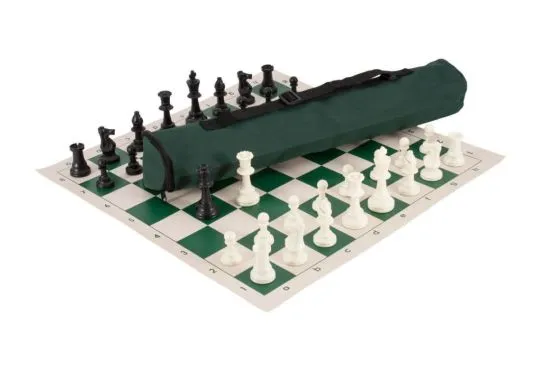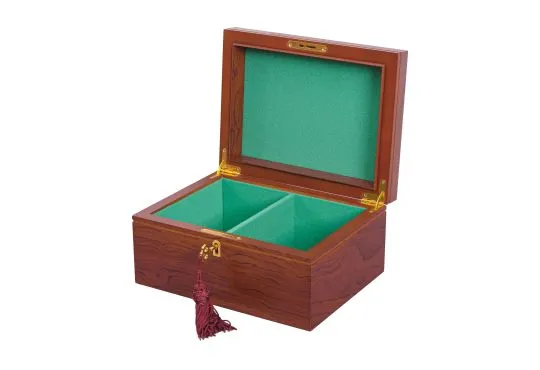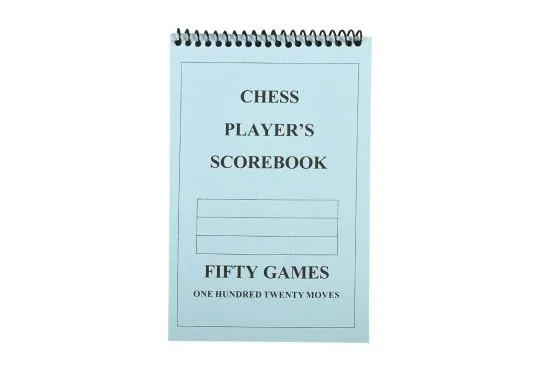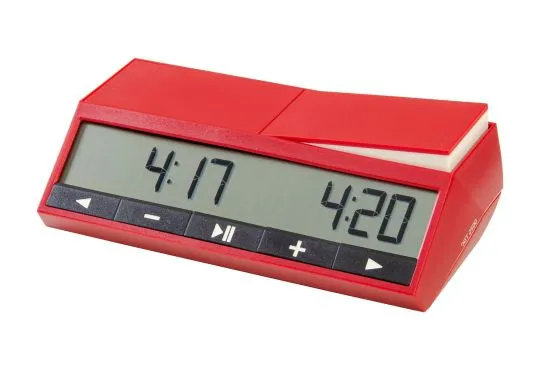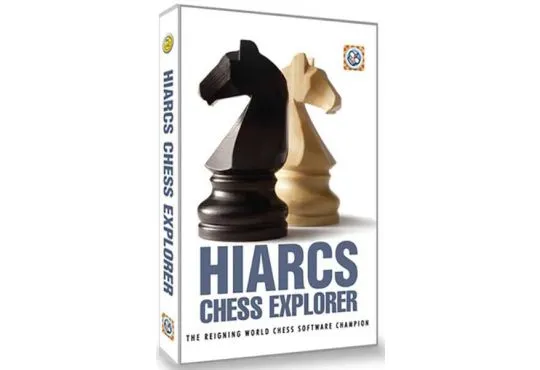How Algebraic Chess Notation Works
Today, the most commonly recognized way of recording a chess game is algebraic chess notation.
This chess language is essential for classical tournament players, who must record their moves on a score sheet. It allows you to play purely vocal or blindfolded games of chess (if your memory is up to the task!). You can read chess records from books to historical tournaments and recent games, all using notation.
Algebraic notation can expand the way you interact with the game of chess and even make you a better player. Here’s how it works.

What is Algebraic Chess Notation and When Do We Use It?
Algebraic notation is a system for recording moves in chess. It is not the first, but today it is the standard and most common method.
Through specific identifications for squares, pawns, pieces, and certain types of moves, a few letters, numbers, and symbols can express an individual move and ultimately a chess game.
Systems of notation are useful for a number of reasons. Before the advent of contemporary media and technology, notation was the primary method to record and transmit chess games without having to diagram every move. This allowed people to write about chess games in books, newspapers, and magazines more easily; play via correspondence or without a board; and accurately record moves during tournaments.
Even today, in classical chess, players must record their moves on a score sheet using algebraic notation. As such, it is interesting and helpful for amateur players to learn, and essential for tournament players.
Standard Algebraic Chess Notation vs The Rest
Previously, other forms of chess notation were more common. Descriptive notation was used to describe moves relative to which file a piece starts on. The ranks were numbered differently for each player, and the kingside and queenside were used to specify which side of the board the move was on. For example, Nf3 in algebraic notation would be Knight to King's Bishop 3 (N-KB3) in descriptive notation.
The complexity and lengthiness of this system soon gave way to coordinate or algebraic notation systems that identify each square on the board using a letter and a number. Some systems use only coordinates to account for different languages, but the most common also use letters to identify each piece.
Long algebraic notation describes both the starting square and the finishing square. The old system also identifies pawns with a p, However, this is left out in modern notations.
Today, standard algebraic notation is a streamlined system that is easy to learn and allows for quick comprehension of moves.
Identifying Squares and Pieces
As we’ve seen, algebraic chess notation works by expressing the position of squares and pieces on the board. Let’s take a look at how to identify squares and pieces.
Squares
The first thing you need to know is how to identify a specific square on the board. Fortunately, this is the simplest part of chess notation.
The horizontal rows on a chessboard are called ranks and are given numbers (1-8). They start from White’s side and end at Black’s. So, for example, all of the white pawns start on the second rank and all of the black pawns start on the seventh.
Vertical columns on a chessboard are called files, and they are identified using letters (a-h). Combine this with the ranks, and you can identify any square on the chessboard. For example, White’s left-hand rook starts on a1.

Pieces
In algebraic notation, pieces are identified as letters. Usually, the first letter of the piece's name (with the notable exception of the knight).
- K = King
- Q = Queen
- R = Rook
- B = Bishop
- N = Knight (As we use K for the King, the Knight is identified with N).
Today, pawn moves are not described using a letter, so P is not a commonly appearing symbol.
Sometimes, international platforms replace the letter identifiers with icons of the pieces to overcome any language issues.
Describing Moves
What we want to express with notation is not the static position of the board, but chess moves. So, how do we do this using the identifications described above?
Simply by describing the piece you will be using and identifying the square where it will end up. For example, a common first move of the game: e4. Because pawns have no identifiers, we only need to describe the end position of the pawn.
A piece move example would be Nf3. We identify the knight (N) and the square where it ends up, f3. Of course, things will get a little more complicated with captures, special moves, and checks, but the basic idea is very straightforward.
Usually, players list moves in pairs as on a score sheet. So, the first move for White and Black will be the first list item, and so on. For example:
- e4 e5
- Nf3 Nc6

Captures
Captures are signified with an x. We start by identifying the piece that will be moving (capturing) and then write x, followed by the square it will be capturing on. For example, Bxd5.
With pawn captures, there are no piece symbols, so we only need to identify the pawn’s file. For example, bxc4.
-
 Free Worldwide Shipping
The Savano Series Luxury Wood Chess Set, Box, & Board Combination Enjoy Savings of 27% Off MSRP When Purchased as a Combination
Free Worldwide Shipping
The Savano Series Luxury Wood Chess Set, Box, & Board Combination Enjoy Savings of 27% Off MSRP When Purchased as a Combination$1923.95
Starting at $1,399.00
To $1,558.95
Additional Symbols for Special Moves
There are certain moves in chess that are unique or have specific functions or characteristics that we need to identify. The most common is castling. We use 0-0 for short (kingside) castling and 0-0-0 for long (queenside) castling.
- The plus symbol (+) is used for Checks. For example, Bc3+ means the bishop moves to c3 and delivers a check.
- Checkmate is indicated with a hash (#). For example, Rf8#
- Promotion is indicated in a few different ways, but the piece the pawn promotes to is always put at the end. To represent a pawn promoting to a queen on the first rank of the d-file, you could write d1Q, d1(Q), d1=Q, or d1/Q.
En passant is another special move in chess, but it has no special notation. You represent the en passant capture as you would any other pawn capture.

Game Results
Game results are also formatted in a specific way, with White’s result being placed first.
- 1-0 for if white wins
- 0-1 for if black wins
And draws are represented as ½–½.
Avoiding Confusion
While uncommon, there are situations in which two pieces of the same type could move to the same square. When this occurs, algebraic notation has a way of distinguishing between the two pieces.
This is done in the same way as pawn captures: by identifying the file the moving piece is on. For example, knights on b3 and f3 can both move to d4 (and d2). If you moved the knight on b3, the notation would be Nbd3. In other words, knight on the b-file moves to d3.
Additional Annotations
While not an official part of algebraic chess notation, there are additional annotations that are used to express the quality or success of a given move.
An exclamation mark (!) is used to represent a “good move” and two (!!) are used to represent a “brilliant move”.
A question mark (?) is used to indicate a “mistake”, and two (??) are used to indicate a “blunder”.
Less commonly, combinations of question marks and exclamation marks are used. !? can signify an “interesting move”, which may be good but has drawbacks. ?! is used to identify a “dubious move”, which is not necessarily a mistake or a blunder, but is not strong or correct either.
Full Game Example
Here is an example of a short chess game played in Copenhagen in 1941.
- 1.e4 e5
- 2.Nf3 d6
- 3.d4 exd4
- 4.Nxd4 Bd7
- 5.Nc3 g6
- 6.Bc4 Nc6
- 7.Nd5 Bg7
- 8.Be3 Nge7
- 9.Bg5 Bxd4
- 10.Qxd4 O-O
- 11.Nf6+ Kh8
- 12.Ng4+ Nxd4
- 13.Bf6+ Kg8
- 14.Nh6#
- 1-0

Test yourself by trying to understand the game without looking at the interface. Can you figure out why the queen sacrifice works? How has White won the game?
Tips for Learning Algebraic Notation
Algebraic chess notation gives you new avenues to explore in chess. From exploring tournament records to describing moves to other players, it creates different opportunities to help you interact with the game.
Learning it can take some time, but there are a few ways to speed it up:
Practice guessing squares. With an unmarked board, pick a square and quickly identify its coordinates. Try to increase your pace until you know the board by heart.
Read past games using notation first. Today, there are many useful interfaces that make it easy to follow chess games. Try to follow games using only the notation, and then use the interface. The combination can speed up the learning process.
Use notation when practicing puzzles or studying openings. If you find the solution to a puzzle, can you also express the moves in notation? Can you describe the first moves of your favorite openings?
With these techniques, you can quickly grasp this new aspect of chess. Give it a go!
Frequently Asked Questions
Writing in algebraic chess notation involves using the coordinates of squares on the board, piece signifiers, and additional symbols to describe moves on the board.
A check is identified using the plus (+) symbol.
B signifies a bishop, x signifies a capture, and d4 is a square on the board. Without an additional piece symbol for pawns, this means a bishop captures a pawn on d4.



